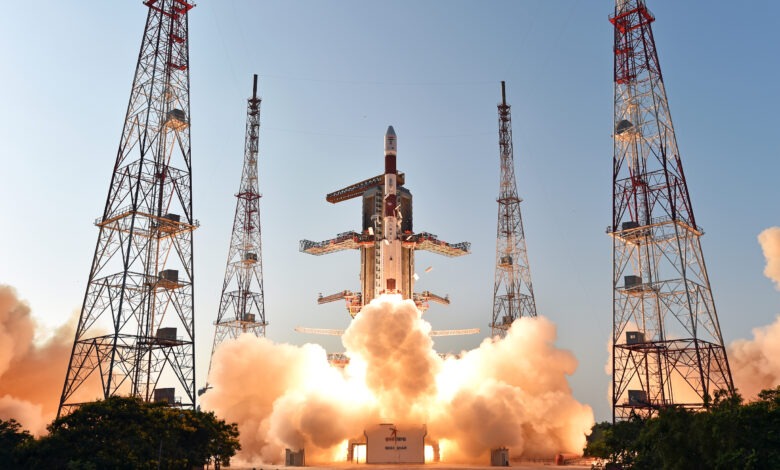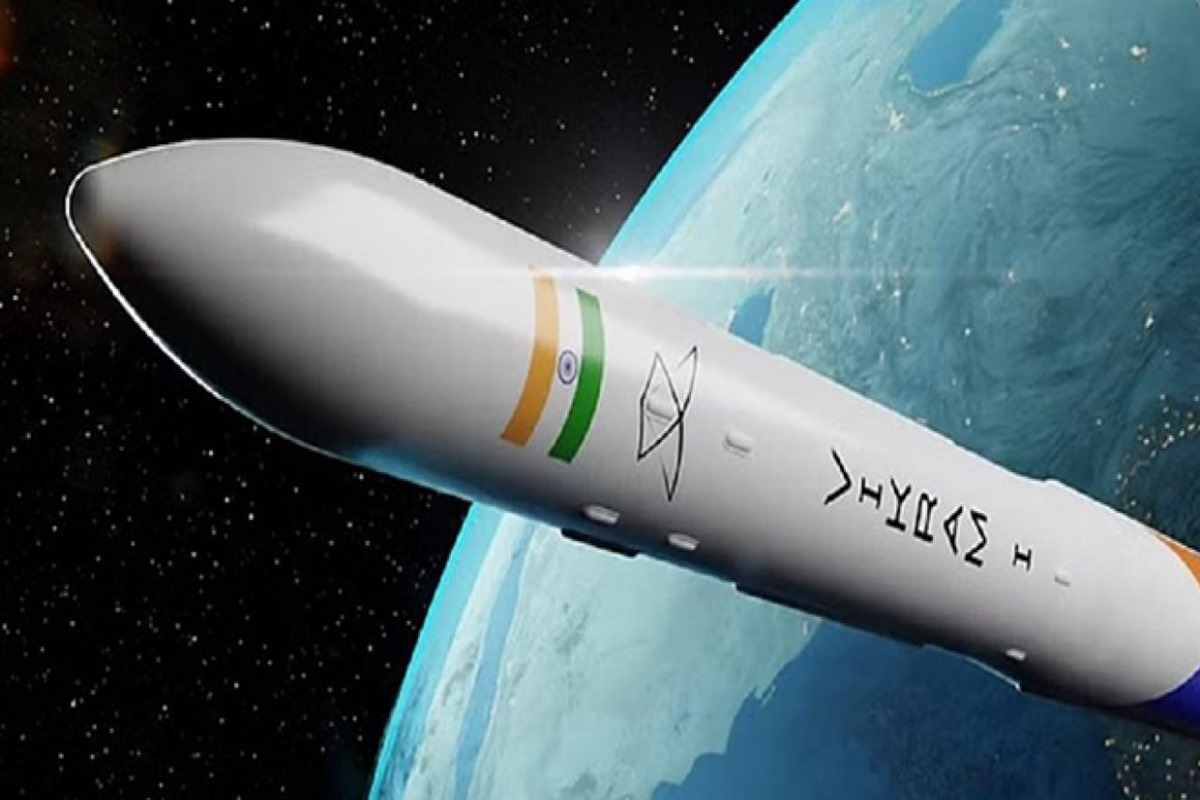
India’s foray into space began with the humble launch of its first satellite, Aryabhata, in 1975. Today, the country stands as a rising star in global space exploration, driven by ingenuity, affordability, and strategic ambition. Milestone achievements like the Chandrayaan-3 lunar mission and the launch of the solar observatory Aditya-L1 in 2023 have propelled India into the global spotlight, underscoring its ability to achieve high-impact results on a lean budget.
As space-based technologies increasingly influence communication, healthcare, education, environmental protection, and national security, India’s expanding footprint in this domain is unlocking widespread benefits. The sector is now a growth engine, catalyzing opportunities for scientists, engineers, entrepreneurs, and thousands of skilled and semi-skilled workers. This momentum is creating jobs, enhancing industrial capacity, and fostering a vibrant innovation ecosystem.
India made history in 2023 when Chandrayaan-3 successfully landed near the Moon’s south pole—an uncharted territory for any nation. This landmark mission aims to study lunar soil and minerals, with implications for future human settlement and resource extraction. In the same year, ISRO launched Aditya-L1, the country’s first solar mission, now stationed at Lagrange Point 1. From there, it continuously observes solar winds and atmospheric dynamics, helping scientists understand space weather that affects critical systems like satellite networks, aviation, and power grids.

These missions reflect not only technical prowess but also India’s growing ambition to shape the global space narrative.
India’s approach to space stands out for its cost-effectiveness. Despite a relatively modest budget compared to agencies in the U.S., China, and Europe, India consistently delivers impactful missions. For example, the Chandrayaan and Mangalyaan (Mars Orbiter Mission) programs were completed at a fraction of international costs. This model has made India a preferred partner for launching satellites, particularly for developing nations and startups targeting low Earth orbit deployment.
In FY 2025–26, India allocated approximately USD 1.7 billion to its Department of Space—reinforcing its intent to make space a strategic pillar of development.
Top 10 Countries in Space Outreach
| Rank | Country | Government Space Budget (USD Billion) | Primary Focus Areas |
| 1 | United States (NASA) | 79.7 | Moon and Mars exploration, Earth observation, satellite launches, private missions |
| 2 | China (CNSA) | 19.9 | Moon missions, Mars rover, space station, military satellites |
| 3 | Japan (JAXA) | 6.8 | Climate satellites, asteroid sample return, planetary science |
| 4 | Russia (Roscosmos) | 4.0 | ISS, lunar program, satellite constellations |
| 5 | France (CNES) | 3.7 | Earth monitoring, rocket systems, international collaborations |
| 6 | European Space Agency | 3.0 | Shared missions, Earth sciences, Copernicus program |
| 7 | Germany | 2.8 | Manufacturing, robotics, Earth observation |
| 8 | Italy | 2.7 | ESA programs, commercial satellites, scientific missions |
| 9 | India (ISRO) | 1.9 | Planetary science, space weather, remote sensing, commercial launches |
| 10 | United Kingdom | 1.5 | Small satellite systems, R&D, navigation technologies |
ISRO’s success goes beyond missions. Since the 1970s, the agency has developed hundreds of technologies, many of which have been transferred to the private sector. This process has significantly bolstered India’s industrial base. The commercial arm of ISRO, NewSpace India Limited (NSIL), has signed over 25 technology transfer agreements, including for the IMS-1 satellite bus, enabling Indian manufacturers to build compact Earth observation satellites.
Innovations from ISRO’s Semi-Conductor Laboratory, such as over 900 application-specific integrated circuits (ASICs), have found use in Indian Railways, improving automation and control systems.
The space sector has emerged as a powerful source of employment. It generates jobs not only for high-profile scientists and engineers but also for thousands of workers involved in manufacturing, logistics, infrastructure, and support services. Building launch vehicles, assembling satellites, and transporting sensitive components like cryogenic engines all require specialized labor and coordination, creating a broad and inclusive workforce ecosystem.
Moreover, the participation of women in space missions has grown significantly. Over 54 women scientists played key roles in Chandrayaan-3 and Mangalyaan, reinforcing India’s commitment to gender inclusivity in science and technology.
India’s space assets serve practical and life-saving purposes. Satellite imaging and Earth observation support early warning systems for floods, cyclones, and landslides—saving countless lives. In remote regions, satellite communication facilitates emergency medical services and connects patients to doctors in real time.
Emerging technologies like augmented and virtual reality, enabled through satellite data, are revolutionizing medical training, allowing students in remote areas to simulate surgeries with expert guidance.
Environmental monitoring has also benefited. ISRO satellites help track air pollution in urban centers like Delhi, assess deforestation, and monitor water quality. These tools are vital for timely public health interventions, particularly in the face of climate change-related threats such as heatwaves and vector-borne diseases.
India’s commercial space sector is thriving. Over 150 startups—including Agnikul Cosmos, Pixxel, and Skyroot Aerospace—are developing cutting-edge technologies such as micro-launch vehicles, advanced imaging systems, and propulsion solutions. Government initiatives like the IN-SPACe seed funding scheme and space-focused venture capital are fueling this transition from a state-led model to a dynamic public-private partnership.
One of the most profound impacts of India’s space outreach is its influence on youth. ISRO’s educational initiatives, outreach programs, and technical skilling efforts are cultivating a new generation of scientists, engineers, and innovators. These programs are not only nurturing scientific curiosity but also enabling startups to translate space research into real-world applications, fostering a self-reliant and innovation-driven economy.
Looking ahead, the upcoming Axiom-4 commercial mission to the International Space Station, which includes Indian astronaut Shubhanshu Shukla, marks another exciting step in India’s space journey.
India’s space ambitions now go far beyond launching satellites or exploring celestial bodies. The space program has become a catalyst for national development—enhancing lives through improved communication, education, healthcare, disaster response, and economic empowerment. As India aims to become a developed nation by 2047, space exploration will remain a foundational pillar of that transformation.
The sky, it seems, is no longer the limit—it is only the beginning.













